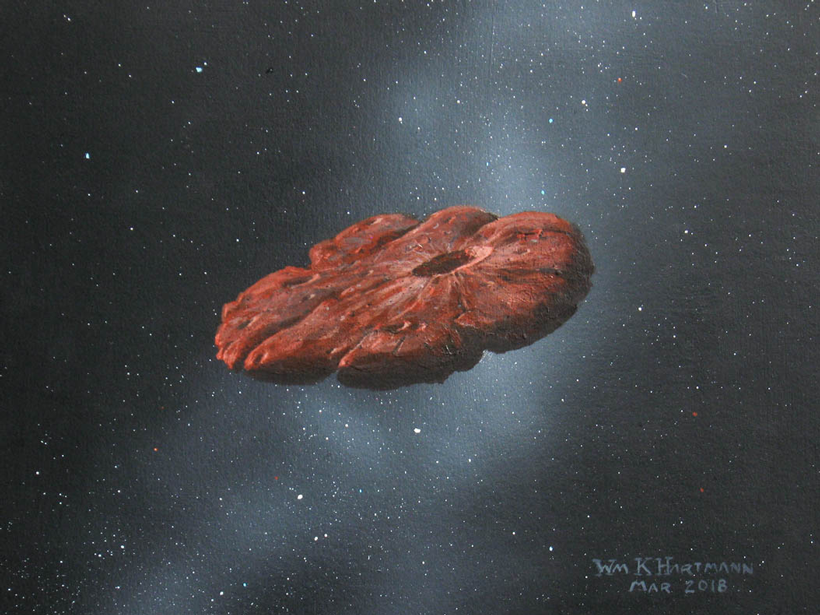Source: Journal of Geophysical Research: Planets
A translation of this article was made by Wiley. 本文由Wiley提供翻译稿。
In October 2017, for the first time in history, astronomers spotted an interstellar object on a journey through our solar system. The interloper? ‘Oumuamua, a shiny object with a flattened body about half a city block long.
Since then, scientists have followed many clues in attempts to determine what ‘Oumuamua is made of—and where it might have begun its journey. Some have hypothesized that it is made of hydrogen ice or water ice, while others have speculated it could be an alien spaceship.
Now, Jackson and Desch present a new analysis that suggests the mysterious object is made primarily of nitrogen ice and may have been ejected from the surface of a Pluto-like body orbiting a star in another solar system.
The new analysis takes into account ‘Oumuamua’s size, its shininess, the conditions it had been exposed to in interstellar space, and the component of its acceleration that is not due to gravity. Using these characteristics, the researchers narrowed down a list of potential materials. They found that the substance that best fits all of the clues is nitrogen ice.
Nitrogen is not an exotic material in our own solar system, the authors note. For instance, Pluto and Triton, the largest moon of Neptune, are swathed in nitrogen ice. Therefore, ‘Oumuamua could have originated from a Pluto-like exoplanet that ejected numerous icy fragments from its surface.
Further calculations suggest that ‘Oumuamua may have been launched into space about half a billion years ago in a solar system potentially located in the Perseus arm of the Milky Way. Ejection from the exoplanet could have resulted from orbital instabilities similar to those seen early in our own solar system’s history. (Journal of Geophysical Research: Planets, https://doi.org/10.1029/2020JE006706, 2021)
—Sarah Stanley, Science Writer
Citation:
Stanley, S. (2021), ‘Oumuamua may be an icy fragment of a Pluto-like exoplanet, Eos, 102, https://doi.org/10.1029/2021EO158681. Published on 19 May 2021.
Text © 2021. AGU. CC BY-NC-ND 3.0
Except where otherwise noted, images are subject to copyright. Any reuse without express permission from the copyright owner is prohibited.

